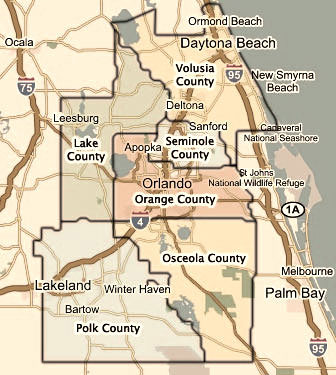Published September 11, 2025
Patience vs. Price - What Really Makes Your House Sell

Patience and price. When it comes to selling your home, both matter—but not in the way most people think. Many homeowners believe they just need to wait for the perfect buyer to come along. But in today’s market, patience alone isn’t what gets homes sold.
The Market Reality in Central Florida

Across Central Florida, homes are spending more time on the market than they were even a year ago. According to recent data:
-
Orange County: Median time on market ~47 days, median price ~$445,000
-
Osceola County: Median time on market ~65–90 days, median price ~$390,000
-
Lake County: Median time on market ~62–76 days, median price ~$385,000
-
Seminole County: Median time on market ~50–55 days, median price ~$440,000
-
Brevard County: Median time on market ~70–75 days, median price ~$360,000
-
Volusia County: Median time on market ~60–65 days, median price ~$360,000
That means sellers need to be prepared for a longer process than we’ve seen in the past few years. But here’s the key: the biggest factor holding many homes back isn’t just time—it’s price.
Sellers often remember the peak years of 2021–2022, when homes could be priced almost anywhere and still receive multiple offers. But prices have leveled off. Year-over-year changes are small—some counties are up just a few percent, others are flat or even down slightly. That means buyers are far more price-sensitive today, and sellers need to pay attention to where the market is, not where it used to be.
A Lesson in Patience (From My Son’s Classroom)
This week, I had the chance to teach my son’s class about patience during their school’s Character Education unit. We used stress balls and tootsie pops to show the kids how to handle frustration, wait for something good, and show empathy when friends or siblings make them upset.
It struck me how similar the lesson is to real estate. Selling your home requires patience, yes—but it also requires emotional control. Just like the kids practiced squeezing stress balls to handle frustration, sellers need to find ways to manage their emotions when the process doesn’t move as quickly as hoped.
The Emotional Side of Pricing
One of the hardest parts of selling is separating what you want from what the market is saying. It’s natural to have a number in mind—especially if you’ve poured your heart, money, and memories into a home. I’ve been guilty of this myself when selling.
But when the market gives us feedback—lots of showings but no offers, for example—we have to set aside emotion and look at the data. Otherwise, we risk getting stuck in limbo: endlessly “practicing patience” but never actually moving toward a sale.
Realistic Goals vs. Stretch Goals
This is where realistic goals versus stretch goals come in. It’s fine to hope for the higher end of your home’s potential, but you need to ask: what will that stretch goal cost me?

Every extra month on the market comes with carrying costs:
-
Mortgage payments
-
Utilities
-
Insurance
-
Maintenance and upkeep
-
Potential moving delays (and higher moving costs)
And here’s the kicker: many sellers who push for that stretch goal end up reducing their price later anyway—often to a point lower than where they could have sold had they priced strategically from the start. In other words, waiting too long for “more” can actually leave you with less.
The Bottom Line
The lesson for kids was simple: patience isn’t just about waiting, it’s about how you act and what you focus on while you wait. The same is true for selling a home.
Sellers who balance patience with pricing strategy—who control their emotions, look at the numbers, and make decisions based on data—are the ones who walk away with both peace of mind and the strongest results.






